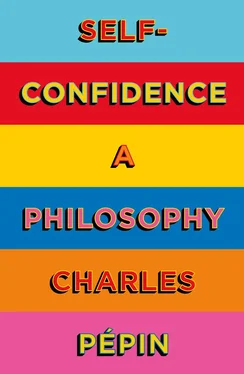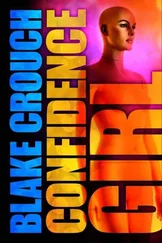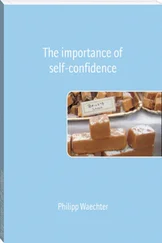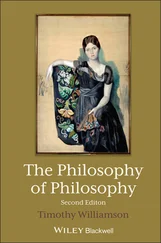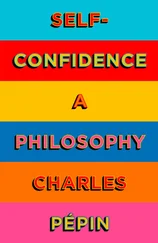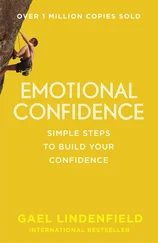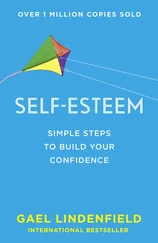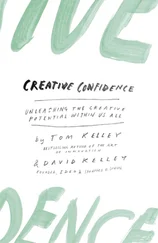2
Confidence through practice
Give me a fulcrum, and with my lever I will move the earth.
– ARCHIMEDES
As an adolescent, Madonna shook off her inhibitions thanks to the words of her dance teacher. But she already danced well, having studied the art for years. And it was because he had noticed her talent for dance that the teacher singled her out for particular praise. We have stressed the relational component of self-confidence, but we mustn’t forget that it also has a great deal to do with skill.
The father of Venus and Serena Williams set his daughters on the path to success. He gave them confidence in the best way: he told them he believed in them, said they would rise above their social circumstances thanks to tennis, emerge from poverty and become the best tennis players in the world. But he didn’t just show confidence in them. He trained them long and hard from the moment they were old enough to hold a racket. The residents of Compton, California, found it fascinating to watch the Williams sisters training: they spent their life on the tennis court, with their father and a basket of balls. Even the gang members in Compton respected the Williams sisters and made sure that no one disrupted their practice. Their father taught them an aggressive style of tennis, starting with a powerful serve and heavy strokes from deep in the back court. He coached them to use an attacking strategy, where the point is decided in two or three volleys, a kind of tennis that hadn’t existed in the women’s game before. He made them hit the same stroke again and again, train and train some more, with a particular focus on serving – and Serena was the first woman to hit a serve that clocked at over 124 mph. The sisters did in fact become the best tennis players in the world, one after another claiming the number one spot in the World Tennis Association rankings. Serena Williams became the best women’s tennis player of all time, racking up thirty-nine Grand Slam titles, twenty-three of them in women’s singles events (beating Steffi Graf’s record), and fourteen in doubles including one when she was two months’ pregnant! In the history of tennis, she is the only female player to have thrice won a Grand Slam title after saving match point in the finals. It takes astonishing confidence not to falter in the finals of a major tournament when you are facing match point.
This confidence came from her tennis skills, a product of her intense training. But it doesn’t just come down to skill. Thanks to repeating the same gestures over and over, they had become second nature to her. Her extreme skill in the end coloured her personality: in Serena Williams’s case, expertise seems to have transformed into confidence. Does this always happen?
In a book that has become a worldwide success, Outliers , Malcolm Gladwell attacks the idea of innate talent and argues for the seductive ‘10,000-hour rule’, popularising an idea originally developed by the psychologist Anders Ericsson. Examining the careers of a group of violinists who trained together at the Berlin Academy of Music, Ericsson wondered what accounted for the differences between what were all excellent musicians. The very best became first violinists in prestigious orchestras or soloists with international careers; the very good ones became professional musicians; and the rest ‘only’ became music teachers. He asked them all the same question: ‘Since the time when you first took up the violin, how many hours have you played?’
The results surprised him. By the age of twenty, none of those who would go on to become ‘just’ music teachers had played his or her instrument for more than 4,000 hours. All those who would become highly qualified professional musicians had played and practised on their instrument for about 8,000 hours. And the highest achievers, those who would become stars in the violin world, had all played for more than 10,000 hours. There wasn’t a single exception. Anders Ericsson then repeated his research with pianists and came up with similar results: professional pianists had about 8,000 hours of playing under their belts, while virtuosos had at least 10,000 hours. He didn’t find a single case of a musician who became a virtuoso without passing the 10,000-hour mark (which works out to roughly three hours a day for ten years).
I am a great fan of the saxophone improvisations of Sonny Rollins: they strike me as a symbol of pure confidence. Sonny Rollins ventures down paths that no one else has explored and creates heavenly, dream-like ballads of astonishing freedom. Recently, I came across an interview with Rollins where he described playing the saxophone at some points in his life for up to seventeen hours a day. His confidence was achieved with a huge amount of work. He had to practise scales on his instrument and master its techniques before he could improvise with such freedom. Among great artists, confidence comes first and foremost from constant, devoted, almost obsessional practice.
But the results of Anders Ericsson’s study should not be interpreted in a simplistic way. Not everyone is going to become a virtuoso just by sticking to his instrument for 10,000 hours. You need to take pleasure in the activity, which has to align with your aspirations, and have a basic predisposition for music. And you need to give those 10,000 hours your attention, be truly present to your art. Other factors probably enter into it as well. The study is interesting all the same because, through its different gradations, it shows how a skill can gradually be incorporated to become genuine confidence. After 8,000 hours, my capabilities are at the point where I can become a professional. Once I have passed the 10,000-hour mark, I can entertain the ambition of becoming one of the best in the world in my field. When Serena Williams became the number-one female player in the under-ten age group, she in fact had 10,000 hours of playing behind her.
Malcolm Gladwell took Anders Ericsson’s study and made it into a general law, as well as a bestseller with a whiff of demagoguery about it. He suggests that in any given field, you need only practise for 10,000 hours in order to acquire mastery of your art and full confidence in yourself. He analysed many instances in great detail, including Mozart and the Beatles, showing that in every case true excellence was achieved only after crossing the 10,000-hour threshold. It’s true, of course, that Mozart could follow a score and play to tempo even before he knew how to read or write. And it’s true that he started composing at the age of six. But his first masterpiece, according to Gladwell – his Piano Concerto No. 9 in E-flat Major , K.271 – was written in Salzburg in 1777. Mozart was twenty-one at the time and already had 10,000 hours of composing to his credit.
Re-examining the history of the Beatles prior to their wildly successful United States tour in 1964, Gladwell counts how many hours John Lennon and Paul McCartney spent onstage playing music. He tells how in 1960, when they were a schoolboys’ rock and roll band, they were lucky enough to be asked to play at a club in Hamburg. The sets at the Hamburg club lasted eight hours at a stretch, and sometimes all night. This was playing on a different scale from the band’s practices in Liverpool, which had lasted an hour at most and often involved repeating the same few songs over and over. In Gladwell’s telling, the Hamburg club gave the Beatles a chance to really train, and it was there that they gained confidence in themselves, especially in their ability to perform together onstage. The many hours of playing allowed them to learn their instruments thoroughly, to expand their repertoire, and to explore their vocal range. It was also there that they learned to read their public and bring it to a pitch of excitement. The Hamburg experience made them a great band. When they landed in the United States in 1964, they had already spent – according to Gladwell’s detailed calculations – some 12,000 hours onstage. That’s what allowed them to win the hearts of Americans.
Читать дальше
